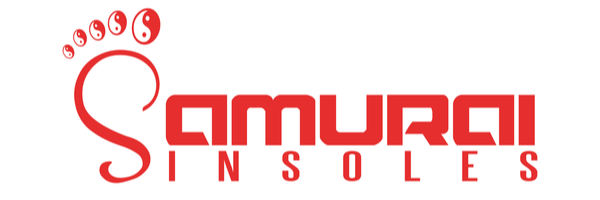When you’re dealing with the sharp, nagging pain of plantar fasciitis, you just want to know what works. Should you grab an ice pack or a heating pad? The answer isn't one-size-fits-all. The best choice between heat or cold for plantar fasciitis really depends on what your foot is telling you.
For that fresh, sharp pain and swelling that flares up after you’ve been on your feet, cold therapy is your best friend. But for the chronic stiffness and dull aches, especially that dreaded first step out of bed, heat therapy is the way to go.
Choosing the Right Therapy for Plantar Fasciitis
Deciding between heat and cold isn't a random guess; it's about understanding how each one affects your body and applying it at just the right time. Each therapy sets off a completely different biological chain reaction in your foot.
Cold therapy, also known as cryotherapy, works by constricting your blood vessels. Think of it as a fire extinguisher for an inflamed foot. When your heel is swollen, tender, and just plain angry after a long day or a run, the cold narrows the blood vessels. This slows down blood flow, which helps numb the pain signals and dramatically reduces that sharp, stabbing sensation from a freshly irritated plantar fascia.
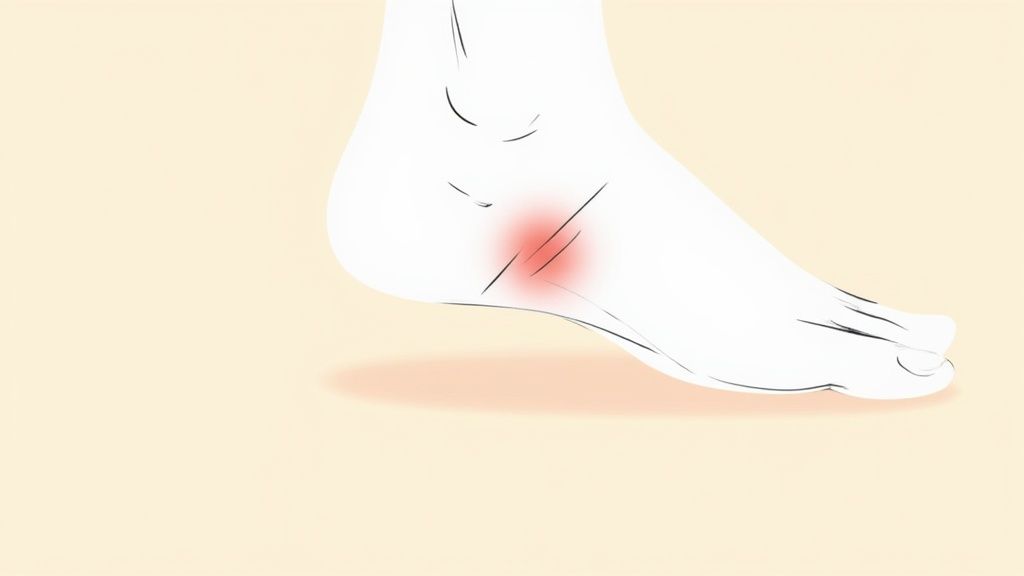
On the flip side, heat therapy (thermotherapy) does the exact opposite. It opens up those same blood vessels to boost circulation. This is what you need for a stiff, tight, and achy plantar fascia—that familiar feeling you get first thing in the morning. By increasing blood flow, you're delivering more oxygen and nutrients to the tissue, which helps it relax, loosen up, and regain some much-needed flexibility.
Timing Your Treatment Matters
I can't stress this enough: when you use these therapies is just as important as which one you choose. Their effectiveness is directly tied to timing. For example, solid research backs this up, showing that applying cold for 20 minutes at bedtime can lead to some impressive results. We're talking a 13% reduction in plantar fascia thickness, a 44% reduction in pain, and an 86% increase in the force your foot can handle without pain.
What's really interesting is that the same study found that applying cold in the morning wasn't nearly as effective. This really drives home how crucial that end-of-day treatment is for taming inflammation. You can dig deeper into these findings about using heat and cold for plantar fasciitis on our blog.
To make things simple, I've put together a quick cheat sheet to help you decide on the spot.
Quick Guide When to Use Heat vs Cold
This table is your go-to reference. Just match your symptoms to the situation to figure out whether you should reach for the ice pack or the heating pad.
| Symptom / Situation | Best Choice | Primary Benefit |
|---|---|---|
| Sharp, stabbing pain after activity | Cold | Reduces acute inflammation and numbs pain |
| Swelling and tenderness in the heel | Cold | Constricts blood vessels to minimize swelling |
| Morning stiffness and aches | Heat | Increases blood flow to improve flexibility |
| General, dull ache without swelling | Heat | Soothes and relaxes tight connective tissue |
Think of this as your starting point. Listen to your body—it will usually tell you what feels right. Sometimes, a combination of both therapies at different times of the day can be the ticket to lasting relief.
Why Your Foot Hurts: A Quick Guide to Plantar Fasciitis
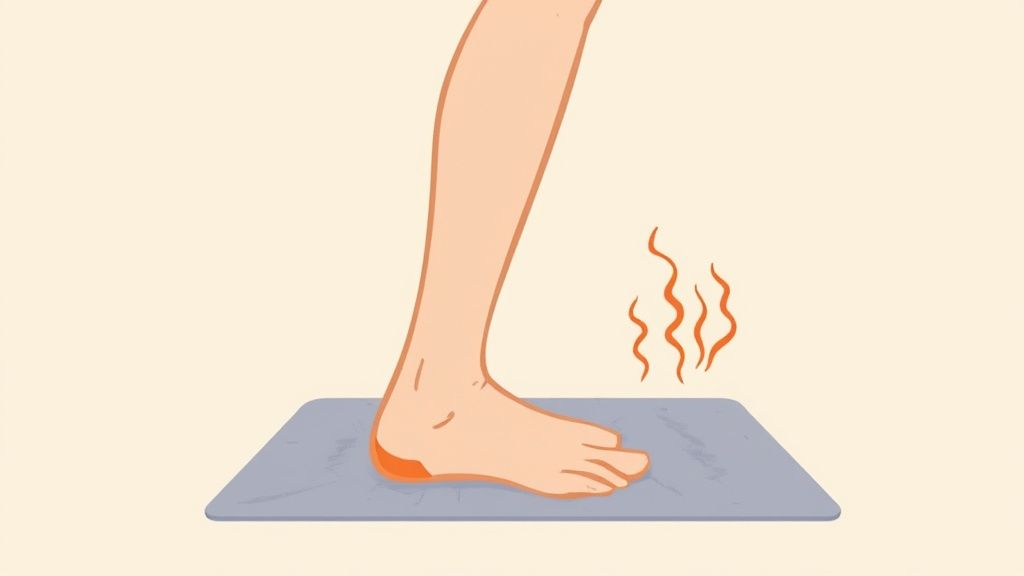
Before you can decide between using heat or cold for plantar fasciitis, it helps to know what’s actually going on inside your foot. The source of that nagging pain is your plantar fascia, a tough, band-like ligament stretching from your heel bone to the base of your toes. It acts like a shock absorber for your foot's arch.
When you put too much strain on this ligament, it starts to get tiny micro-tears. This damage triggers inflammation and pain—the classic signs of plantar fasciitis. But not all plantar fasciitis pain feels the same, and knowing the difference is crucial for finding real relief.
Acute Inflammation vs. Chronic Stiffness
So, what kind of pain are you feeling? It usually falls into one of two camps.
First, there’s that sharp, stabbing pain. This is acute inflammation. You’ll often feel it most intensely after a long run, a day spent on your feet, or with those dreaded first steps in the morning. This is your body's immediate response to fresh irritation and swelling in the fascia.
Then there's the dull, persistent ache that comes with a feeling of stiffness. This is chronic tightness. Over time, the plantar fascia can lose its flexibility, shortening and stiffening up while you rest. That’s why you might find yourself hobbling around when you first get out of bed.
Key Insight: Learning to tell the difference between fresh, sharp inflammation and a dull, chronic ache is the secret to choosing the right therapy. It moves you from just guessing to applying a smart, targeted treatment.
Once you know which type of pain you're dealing with, you can pick the right tool for the job. To get a more thorough breakdown of the mechanics, feel free to check out our complete guide on what is plantar fasciitis.
Ultimately, treating that fiery, acute pain is a different game than loosening up chronic stiffness. One needs calming down, the other needs warming up. Getting this right is your first real step toward breaking the pain cycle for good.
How Cold Therapy Calms Acute Foot Pain
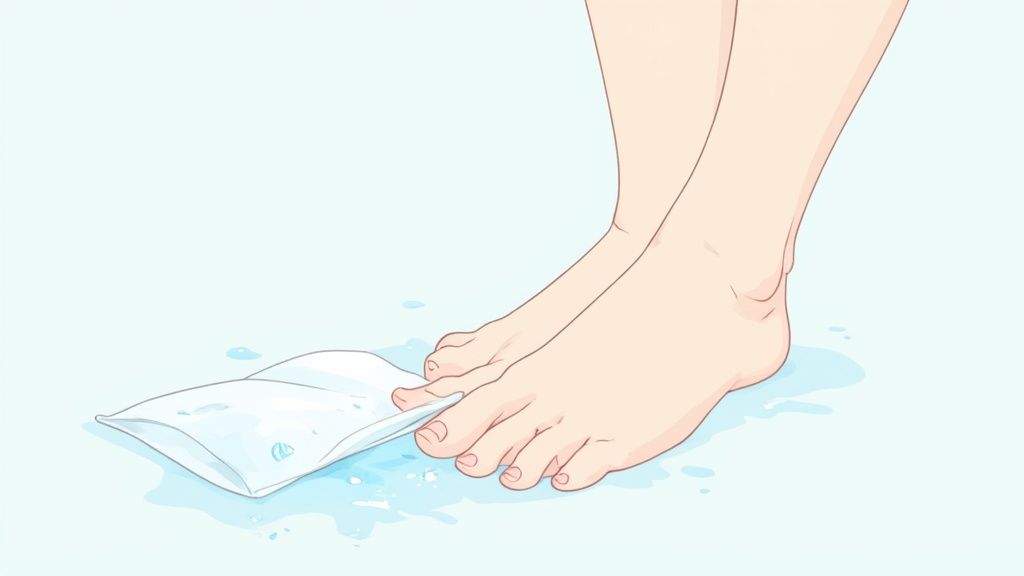
When you're hit with that sharp, stabbing pain of a fresh plantar fasciitis flare-up, your first instinct should be to calm things down. This is where cold therapy, also known as cryotherapy, becomes your best friend. Applying cold directly to your foot is a powerful and immediate way to manage the intense pain that comes from overstraining the tissue.
The logic behind it is pretty simple. When you ice your heel and arch, the cold makes the blood vessels in that area clamp down and get smaller. This process is called vasoconstriction, and it’s a game-changer because it drastically cuts down on the blood flow to your inflamed plantar fascia. When the area is swollen, angry, and throbbing, less blood flow is exactly what you want.
The Twofold Benefits of Icing Your Foot
Slowing down blood flow gives you two major wins against acute pain. First, it directly tackles the swelling and inflammation, which are the root causes of that awful, pulsating ache. Second, the cold works as a natural anesthetic, temporarily numbing the nerve endings in your foot. This gives you a much-needed break from the relentless pain signals your brain is receiving.
Key Takeaway: Think of cold therapy as an emergency brake for your pain, not a permanent fix. It hits the pause button on inflammation, giving your foot a chance to settle down so the real healing can start.
This isn't just theory; it makes a real, measurable difference. Research backs this up, showing that applying cold consistently can physically shrink an inflamed plantar fascia. One study found the tissue thickness went from an average of 0.48 cm down to 0.39 cm after treatment. You can read more about these findings on plantar fasciitis treatment if you want to dig into the science.
Practical Methods for Applying Cold Therapy
Getting started with cold therapy is easy, and you probably already have what you need at home. The goal is to be consistent and, most importantly, safe.
Here are a couple of go-to methods that work wonders:
-
Frozen Water Bottle Roll: Just grab a standard plastic water bottle and pop it in the freezer. Once it's solid, sit down and gently roll it under the arch of your foot for about 15-20 minutes. This is great because it combines the cold with a gentle massage to help loosen up that tight fascia.
-
Gel Pack or Bag of Ice: A commercial gel pack or even a Ziploc bag with crushed ice works perfectly. The crucial step here is to always wrap the ice pack in a thin towel. Never put ice directly on your skin, as it can cause an ice burn. Hold it on the most painful spot for 15-20 minutes.
So, when you're debating heat or cold for plantar fasciitis, ice is the undisputed champion for that immediate, sharp pain. Try to make it a habit, especially after a long day on your feet or any activity that tends to make it flare up. Consistency is what really helps keep that inflammation in check.
How Heat Therapy Soothes Chronic Stiffness
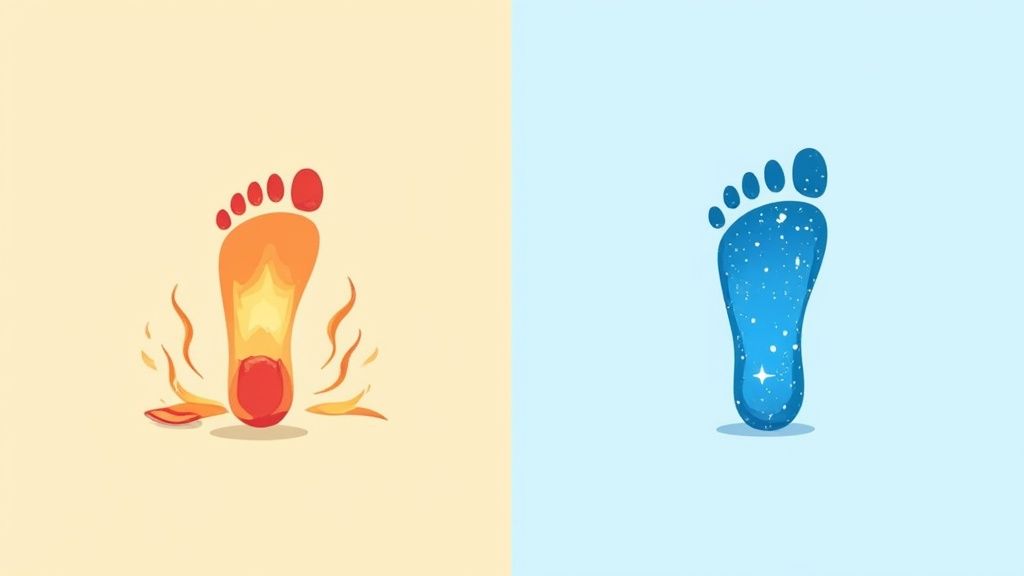
While ice is fantastic for that initial, sharp pain, heat therapy serves a totally different purpose in your recovery. Think of heat as your secret weapon against the chronic stiffness and dull, nagging ache that often comes with plantar fasciitis—especially that dreaded first-step-out-of-bed pain.
Heat works by triggering the opposite of what cold does. It causes vasodilation, which is just a fancy term for widening your blood vessels. This process boosts circulation, flooding the damaged plantar fascia with fresh, oxygen-rich blood. It's like sending a top-notch repair crew with all the best materials directly to the construction site. This increased blood flow not only helps nourish the tissue for better healing over time but also delivers some pretty immediate relief.
The warmth helps relax the tight, contracted muscles and connective tissues in your foot. This gentle loosening is exactly what you need to improve flexibility and ease the painful tension that builds up while you sleep.
When and How to Apply Heat Safely
With heat for plantar fasciitis, timing is everything. The best time to apply warmth is before you do anything that usually brings on stiffness. Using heat first thing in the morning, even before you stand up, can completely change how you feel for the rest of the day.
Key Insight: Applying heat before you stretch or walk gently "wakes up" the plantar fascia, making it more pliable and less prone to injury. This simple pre-activity routine can transform your dreaded morning hobble into a much smoother start to your day.
Remember, the goal is a soothing, gentle warmth. You never want intense heat that could burn your skin. Your foot should feel comfortably warm, not uncomfortably hot.
Here are a few simple and safe ways to apply heat:
- Warm Foot Soak: Fill a basin with warm water and toss in some Epsom salts. Soaking your foot for 15-20 minutes does double duty: the warmth soothes while the magnesium from the salts helps relax your muscles.
- Heating Pad: An electric heating pad or a microwavable pack works great. Just be sure to start on a low setting and always place a thin towel between the pad and your skin to be safe.
- Warm Towel: This one couldn't be easier. Soak a small towel in warm water, wring it out, and wrap it around your foot. You’ll probably need to reheat it every few minutes to keep the temperature consistent.
Ultimately, choosing between heat or cold for plantar fasciitis depends on the kind of pain you're feeling at the moment. For that chronic, nagging stiffness, a bit of gentle heat is often the perfect way to soothe your foot and get it ready for the day.
Choosing the Right Therapy for Your Situation
When you're dealing with plantar fasciitis, figuring out whether to use heat or cold isn't just a theoretical question—it's about making a practical choice based on how your foot feels right now. Generic advice often misses the mark because your pain changes throughout the day. The secret is to listen to your body and give it what it needs in that specific moment.
So, let's get practical and walk through the common situations you'll face. Each one calls for a different tool, and knowing which to grab is your fastest route to feeling better.
For Pain First Thing in the Morning
We've all been there: that sharp, stabbing sensation with the first few steps out of bed. It’s a hallmark of plantar fasciitis. This happens because your plantar fascia ligament gets stiff and shortens overnight. The mission here is to gently wake it up and loosen the tissue before you put your full weight on it.
- Your Best Choice: Heat Therapy
- Why It Works: Applying a heating pad or even a warm, damp towel for 10-15 minutes before you stand up gets the blood flowing. This boosts elasticity in the fascia, making it more flexible and far less likely to scream at you when you get out of bed. Think of it as a mini warm-up for your foot.
Pro-Tip: To get the most out of your morning heat session, follow it up with some light stretches. Gently point and flex your foot, or roll it over a small ball or can. This gives the fascia an extra bit of prep work before the day begins.
For Pain After a Run or Long Day
If your heel is throbbing and swollen after a run, a long walk, or a grueling shift at work, you're looking at fresh, acute inflammation. Your plantar fascia has been pushed too hard, and the top priority is to calm everything down before it gets worse.
- Your Best Choice: Cold Therapy
- Why It Works: An ice pack or a frozen water bottle directly constricts the blood vessels, which is exactly what you need to reduce swelling. It also helps numb the area, giving you quick relief from that sharp, pulsating pain. Aim for 15-20 minutes right on the most tender spot.
For a Dull Ache at the End of the Day
Sometimes, the pain isn't sharp or intense. It’s more of a persistent, dull ache that hangs around, often without much swelling. This usually points to chronic muscle tension and stiffness that has built up over the day.
- Your Best Choice: Heat Therapy
- Why It Works: For this kind of general soreness, a warm foot soak works wonders. The heat helps relax not just the foot but also the tight muscles and connective tissues in your lower leg that contribute to the problem. It's a fantastic way to unwind and ease that tension before bed.
These situational strategies are a huge part of day-to-day pain management, but they're most effective when they’re part of a bigger plan. To build a complete recovery routine, check out our guide on how to treat a plantar fasciitis flare-up.
To help you make a quick decision in the heat (or cold) of the moment, I’ve put together a simple cheat sheet.
Heat vs Cold Application Cheat Sheet
Here’s a quick-reference table to help you decide which therapy is right for your specific symptoms. Think of it as your go-to guide for making the right choice, right away.
| Criteria | Cold Therapy (Cryotherapy) | Heat Therapy (Thermotherapy) |
|---|---|---|
| Best For | Sharp, stabbing pain and visible swelling after activity. | Chronic stiffness, dull aches, and morning pain. |
| Primary Goal | Reduce acute inflammation and numb immediate pain. | Increase blood flow, relax tissues, and improve flexibility. |
| When to Use | Immediately after exercise, a long walk, or a day on your feet. | Before stretching, before getting out of bed, or for general soreness. |
| Duration | 15-20 minutes per session. | 15-20 minutes per session. |
| Warning | Always use a towel to protect skin from ice burns. | Never use high heat; avoid falling asleep with a heating pad on. |
Ultimately, both heat and cold have their place in your toolkit. The trick is simply knowing when to use each one to get the relief you need.
Combining Treatments for Better Results
So, should you use heat or cold for your plantar fasciitis? Sometimes, the best answer isn't picking one over the other—it's using both. There's a powerful technique called contrast therapy, which involves switching between hot and cold to create a kind of "pump" effect in your foot. Done right, it can really kickstart your recovery.
The idea is pretty simple. The heat expands your blood vessels, drawing in fresh, nutrient-rich blood to help repair the damaged tissue. Then, the cold immediately constricts them, helping to push out inflammation and waste products. This cycle of flushing and nourishing gives your body's natural healing process a serious boost.
An Easy At-Home Contrast Therapy Protocol
You can do this right at home with just two buckets or basins. Fill one with comfortably warm water and the other with cool water and some ice.
- Start with Heat: First, soak your foot in the warm water for 3 minutes.
- Switch to Cold: Right after, move your foot into the cold water for 1 minute.
- Repeat: Keep alternating like this for about 15-20 minutes. Just make sure you always finish with the cold water soak.
This simple routine is a great way to tackle both pain and stiffness at the same time. But remember, heat and cold therapies are just one piece of the puzzle.
True, lasting relief from plantar fasciitis rarely comes from a single treatment. A holistic approach that combines therapies to address pain, support the foot, and promote healing is the most effective path forward.
Building a Complete Recovery Plan
For the best results, you need to integrate these temperature therapies into a broader recovery plan. The research is clear on this: combining strategies works far better than just doing one thing. For example, one study found that patients who used a combination of treatments like stretching and night splints saw a 100% cure rate—a huge jump compared to those who didn't. You can dig into the details of this study on integrated therapies yourself.
A solid, comprehensive plan should always include:
- Targeted Stretching: Daily stretches for your calves and the plantar fascia itself are crucial for improving flexibility.
- Supportive Footwear: Make sure you're wearing shoes that give your arches proper support and cushioning.
- Proper Insoles: Using a good pair of insoles can correct underlying biomechanical issues, like overpronation, that contribute to the problem.
Think of it this way: using the best insoles for plantar fasciitis like Samurai Insoles provides the structural support your foot needs all day long. Then, in the evening, you can use contrast therapy to manage symptoms and accelerate healing. This integrated approach attacks the problem from all angles and is your surest path to getting back on your feet for good.
Common Questions About Using Heat and Cold for Foot Pain
When you're dealing with plantar fasciitis, figuring out the right way to use heat and cold can bring up a lot of questions. It's smart to get clear answers so you can soothe your feet safely and effectively, without accidentally making things worse. Let's tackle some of the most common ones I hear.
Can I Use Both on the Same Day?
Absolutely. Not only can you use both, but alternating between them can be a game-changer. This technique, called contrast therapy, gives you the best of both worlds.
A great way to do this is to use heat in the morning to get rid of that awful morning stiffness and loosen up the fascia. Then, at the end of the day, use cold to calm down any inflammation and soreness that built up from being on your feet.
How Long Should I Apply Heat or Cold?
This is a big one. Keep your sessions for either heat or cold to no more than 15 to 20 minutes at a time. It might be tempting to go longer, thinking more is better, but it's often counterproductive.
Too much cold can cause skin or nerve damage, while leaving heat on for too long can sometimes make inflammation worse.
Any Safety Precautions I Should Know?
Yes, a few crucial ones. First, never put a hot or cold pack directly on your bare skin. Always wrap it in a thin towel to create a protective barrier.
Most importantly, and this is a serious warning: never fall asleep with a heating pad on. It's a significant burn risk.
You're aiming for a gentle feeling of warmth or coolness. If you feel any sharp, stinging, or burning sensations, stop the treatment right away. This is about providing relief, not causing more pain.
When Should I See a Doctor?
If you've been consistently using heat, cold, and gentle stretches for a week or two and the pain just isn't getting better, it's time to check in with a professional.
Pain that hangs around could signal a more serious problem or mean that you need a different treatment approach. A doctor or physical therapist can give you a proper diagnosis and point you toward more advanced options if needed.
When you pair these simple therapies with the solid, all-day support of Samurai Insoles, you build a really powerful routine for relief. The insoles work to prevent the strain that causes the pain in the first place, while heat and cold help you manage the daily symptoms. See for yourself how our insoles can bring you lasting comfort by visiting our site: SamuraiInsoles.com.
